Panzers of all types had the ability to deploy smoke candles when the Tiger was under development in 1942. The traditional candle rack at the rear of a tank was due to be replaced by a new launcher system, and this was chosen for the Tiger.
The system comprised two launcher devices that were fixed to the forward upper sides of the turret, and controlled from inside it by triggers.
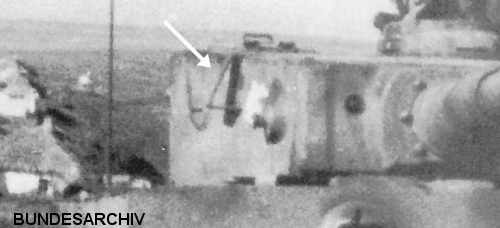
The launcher was designed for the slanting turret walls of the old Panzers III and IV. Because the Tiger had vertical walls, brackets were welded on to provide a slanted surface. This photo shows a bracket (arrowed) without a smoke launcher attached to it.
The brackets were present on Tigers from the very beginning of production, but launchers were not available until October 1942, so they had to be field-installed on the few Tigers already in service [2, see 3.4.2.1] .
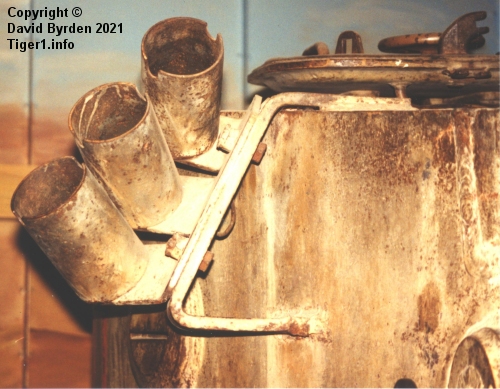
Here is the complete assembly on a museum tank (Bovington's Tiger "131"). Two large bolts attach the launcher device to the bracket.
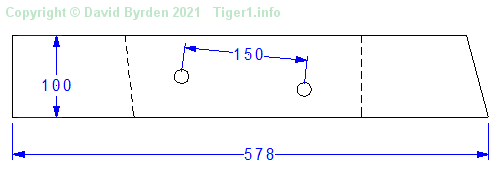
Each bracket was a plain strip of 15mm-thick metal folded into shape. This diagram shows the strip for the left side of the tank. The fold lines are marked. The width of the strips on Bovington museum's Tiger is 100mm, but photographs show other Tigers with 90mm strips.
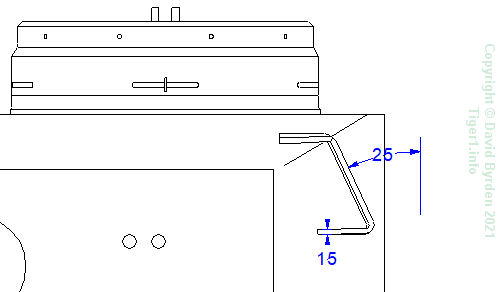
The manufacture of these brackets was not precise. They could be off-angle by a few degrees, for example.
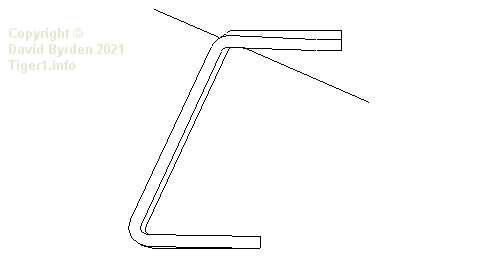
Both ends of a strip had to be twisted to make them conform approximately to the turret shape, as you can see in this diagram.
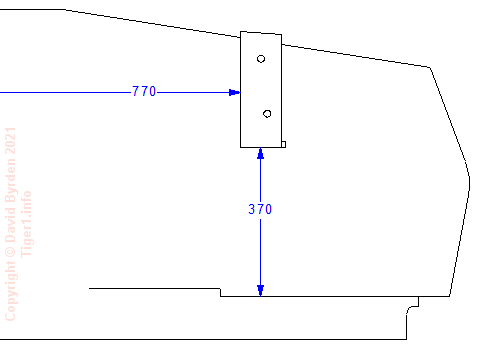
The designers' decision to fit the bracket within a "box" profile is what made it difficult to fold.
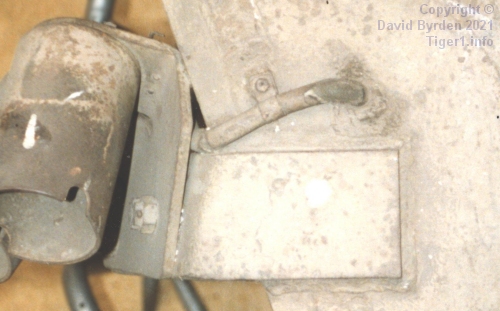
Because of the fold angle, the face of the bracket was not parallel to the tank's axis. Instead, it angled the launcher device slightly outward from the forward direction. This photo is taken from directly above.
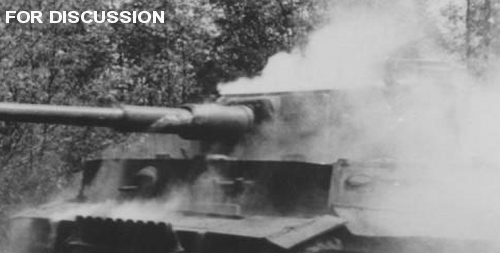
Complaints about the new launcher devices came back from the frontline troops. Because the launcher pots faced forward, small-arms fire could enter them and ignite the smoke candles within the pots. This photo shows the result: the crew lose sight of their surroudings.
Therefore, the smoke launcher system was no longer installed on Tigers after July 1943. The "Early" version Tiger was then still in production, so the last "Earlies" were built with no trace of the smoke system [2, see 3.4.2.1] .
Also, at that time, the smoke system was ordered to be removed from Tigers in the field. Photos show that some, but not all, units carried out the order. They would usually cut off the bracket with a welding torch, leaving only a tab on the roof. Meanwhile at the factory, a small number of old "Early" turret shells with brackets were still in stock. They were eventually finished as "Mid" turrets, with the brackets likewise cut off.
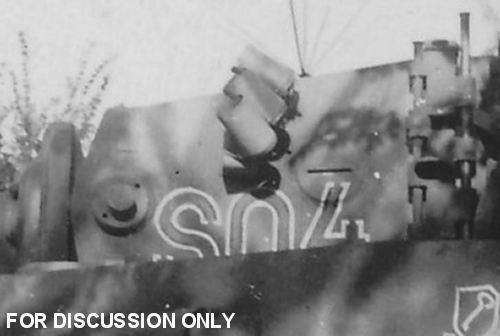
But there was also a factory reserve of finished Tigers, including Befehlstigers. The smoke system was left on these tanks, and they were still being issued weeks later. This is Befehlstiger "S04", issued new to s.SS.Pz.Abt.101 in August 1943.
[2] DW to Tiger 1
[3] Survey of Tiger 250122, at Bovington museum, by David Byrden